Mark Cavendish's guide to cycling's cobbled classics
- Published
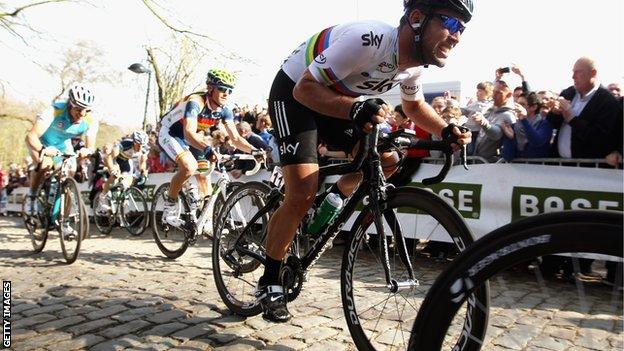
Mark Cavendish ground his way over the cobbles at Gent-Wevelgem in 2012
Some cyclists only like climbing big mountains, others only like charging down the other side, some prefer powering through the lanes in tight formations, others just tag along for the cake stops and conversation.
And then there are those who enjoy being bounced, bruised and buffeted from one end of Belgium to the other.
If you wipe the grime off the faces of this group you will notice a smile because they are currently in the midst of their own mini-season: the cobbled classics.
Eight races over six weeks; seven in Belgium, one in France; four full-blown classics, four slightly less prestigious semi-classics; 79 sections of badly cobblestoned road totalling 72 miles; and innumerable blisters, broken bones and busted wheels.
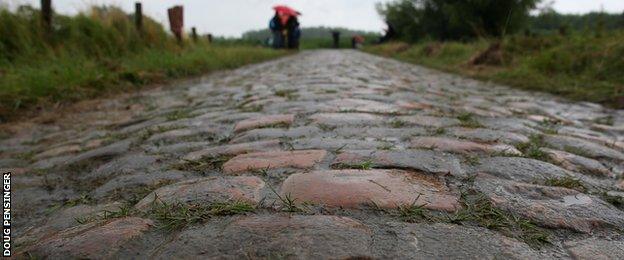
There is a knack to riding these bumps and Belgian riders have dominated, winning nearly 70% of the Tours of Flanders and half of the Paris-Roubaixs
British superstar Mark Cavendish has won two of these races - Kuurne-Brussels-Kuurne , externaland Scheldeprijs , external- a total of five times, and he would dearly love to add a third, Gent-Wevelgem,, external to his collection on Sunday.
The 29-year-old Manxman is certainly on the right team to do so, as his Belgian-based Etixx - Quick-Step squad is packed with warriors who eat cobbles for breakfast and laugh in the face of steep, muddy hills more suited to tractors than carbon road bikes.
Here are Cavendish's seven steps for cobblestoned joy.
Everything you know is wrong
"You can't compare it to anything else. These clinkers you get in British town centres, they're not cobblestones. The ones in Belgium are called 'kinderkoppen' in Dutch, which means 'babies' heads' because they're about that size, and they're just stuck loosely in the roads."
It hurts, everywhere
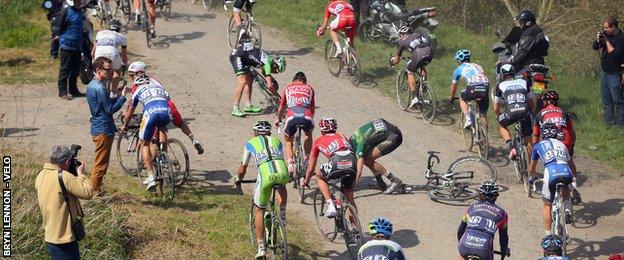
Fallen rivals are part of the obstacle course during a cobbled classic and it is a very lucky rider who does not have to pick himself up or change bikes at least once during a race
"When I tell people I'm riding on the cobbles, the answer I usually get is 'I don't envy your bum'. But it's actually not your bum that gets the worst pounding. That hurts too, but it's your ankles and wrists that really suffer."
Little but often soon adds up
"A lot of the climbs and the cobbled sections in these races are quite short. They're a bit longer in Paris-Roubaix,, external but usually they are bursts of effort, unlike the slogs you do in the mountains. So it's like doing an interval workout rather than suffering for a long time. Anybody who has done intervals in the gym, on the bike or running will know that if you do repeated efforts it eventually sneaks up on you. You might do one or two sections of cobbles and everything is OK - maybe a little uncomfortable - but once they start to add up it really takes its toll."
This year's cobbled capers |
|---|
28 Feb: Omloop Het Nieuwsblad - 200km, won by Britain's Ian Stannard |
1 Mar: Kuurne-Brussels-Kuurne - 195km, won by Britain's Mark Cavendish |
25 Mar: Dwars door Vlaanderen - 200km, won by Belgium's Jelle Wallays |
27 Mar: E3 Harelbeke - 215km, 17 climbs |
29 Mar: Gent-Wevelgem - 239km, nine climbs |
5 Apr: Tour of Flanders - 264km, 19 climbs, nine cobbled, one of cycling's 'Monuments' |
8 Apr: Scheldeprijs - 204km, seven cobbled sections |
12 Apr: Paris-Roubaix - 253km, 27 cobbled sections, another 'Monument' |
Follow the locals
"A lot of the classics in Belgium cover the same roads, just in a different order. So a lot of the riders who do those races consistently just remember the smoothest lines. For instance, when I rode Kuurne-Brussels-Kuurne, where I won a few weeks ago, we were going up the Oude Kwaremont and my team-mate Tom Boonen, who was just in front of me, suddenly darted from the middle of the road to the right. I wondered what he was turning right for and then it hit me: my front wheel flew in the air because I'd just rammed into a broken cobble. He knew that stretch of road so well he knew when to turn to miss it."
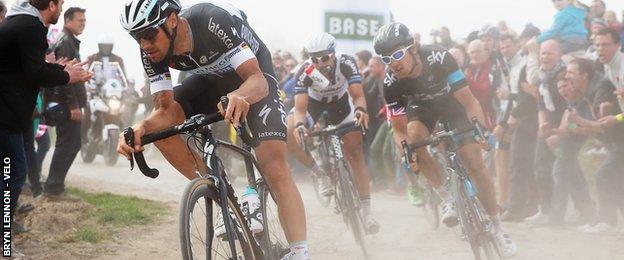
Slippery when wet, dusty when dry, it pays to know your way around Flanders' cobbles, which is why Belgium's Tom Boonen is always a good man to follow, if you can hold on
Sit down, stay smooth
"But there is a real technique to it, even to pedalling on it, because your bike is going all over the show and it's hard to keep a smooth and consistent pedalling style. You have to learn to sit on your saddle and try to stay smooth while your bike is jumping about."
It's all about the tape
"I like an extra roll of tape on my bars when I do the cobbles, just to provide a bit of sponginess for your hands. I don't change my saddle, but then I don't use a carbon-fibre saddle without some cushioning anyway. I wouldn't recommend the cobbles on a carbon-fibre saddle without cushioning. We also use bikes with a longer wheelbase and higher clearance - they're specially adapted to deal with the mud and so on. Oh, and take some air out of your tyres."
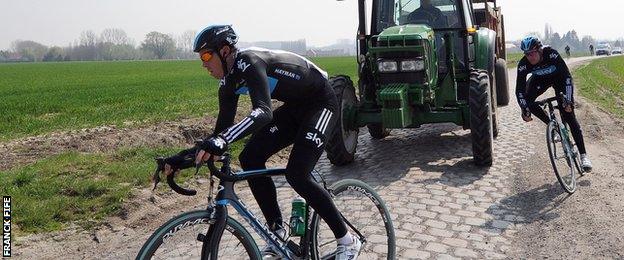
These roads are not designed for road bikes, they are not designed for cars either, and the weight of the tractors gives them a crowned effect: a raised middle with two trenches you want to avoid
Know your limits
"I won Kuurne-Brussels-Kuurne and that covers some of these sections and hills, and I rode Dwars Door Vlaanderen,, external which isn't as hard as the Tour of Flanders, external but does a lot of similar roads. But Flanders is a bit too hard for my body-type. Pure climbers don't do well there, either. But a lot of the other cobbled classics I can ride well, and at Etixx - Quick-Step I'm in the best team to do that."
- Published12 April 2015
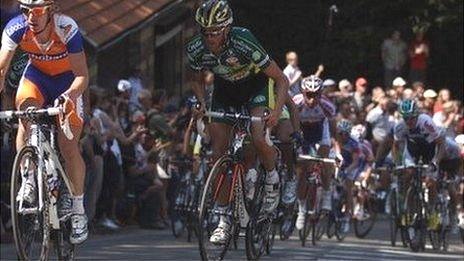
- Published1 March 2015
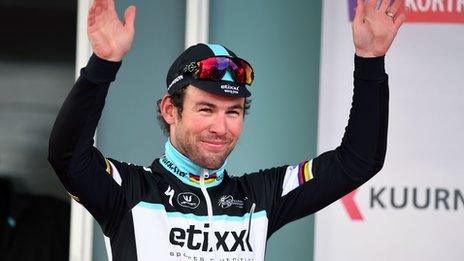
- Published28 February 2015

- Published4 September 2014
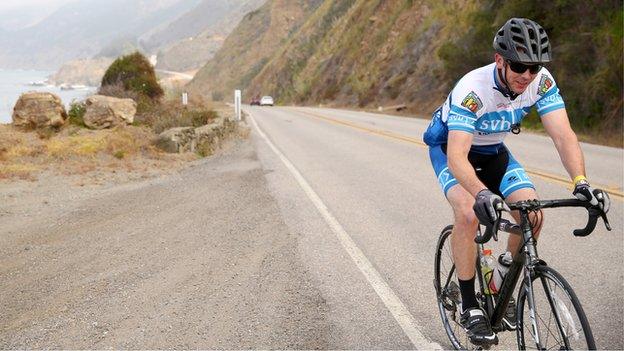
- Published19 July 2016
